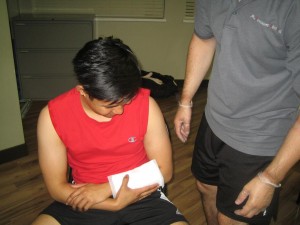A skin blister is best described as a round area of skin that is filled with fluid that appears as a bubble or bump. The fluid can either be clear or filled with blood or pus. Blisters usually manifest on the skin on the feet and hands but can also appear in other parts of the body. Some of the prevalent causes of blisters include burns and friction. Friction can occur once the skin rubs against the inside of a shoe or on a garden tool. In most cases, skin blisters usually go away without requiring treatment.
When it comes to skin blisters, it is important that you learn how to properly manage them. All you have to do is to take part in a first aid training today so that you will learn how to care for skin blisters.
Moleskin
Blisters should also be protected with moleskin. These are small, doughnut-shaped pads that can be placed over the blister in which the blister is positioned in the hole. This will help protect the blister from being exposed to friction that can cause pain. Antibiotic ointments can be applied on the blister as well.

Bandage
Blisters typically drain on their own. You have to keep the skin close to the blister clean and properly covered with an antibiotic ointment and bandage. In case the blister is on the foot, you can apply a small amount of petroleum jelly on top of the bandage to reduce the friction while walking. Petroleum jelly can help minimize the friction when the individual uses the affected foot.
What to do for a dried blister?
Once the fluid inside the blister has drained and the covering skin has dried up, the surface skin could not be cut away. If the surface skin is cut away, you have to cover the underlying skin using antibiotic ointment and bandage to prevent infection as well as for protection.
What to do for an infected blister?
If the blister becomes infected, it is important to seek medical care as soon as possible. The doctor will usually prescribe an antibiotic for treatment of the infected blister.
Large and sore blisters
It is important to note that the fluid within large blisters that are painful can be drained. In such cases, a needle that will be used to puncture the blister bubble must be sterilized. You can do this using a flame by heating the needle and allowing it to dry or simply use rubbing alcohol. Puncture the blister but be careful to only pierce the dead surface skin and apply pressure to drain the fluid on clean gauze. Once the blister is completely drained, apply an antibiotic ointment and bandage.
Swelling
There are some blisters that can cause swelling which can eventually lead to discomfort. The swelling can be managed by applying an ice pack on the site.
